Papers by International Journal of Aquatic Science
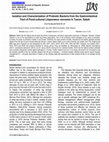
Sabah has the highest annual white leg shrimp (Litopenaeus vannamei) aquaculture production in Ma... more Sabah has the highest annual white leg shrimp (Litopenaeus vannamei) aquaculture production in Malaysia. However, disease infection is one of the big problems to white leg shrimp aquaculture. One of the promising control strategies is the using of probiotics. Currently, the study on probiotic in Sabah is very limited. Therefore, this study aimed to isolate, characterize and identify potential probiotic bacteria from the gut of pond-cultured white leg shrimp in Tuaran, Sabah. Eight out of a total of twenty one isolates from TSA, Rogosa and MRS agar were screened out and designated as GS4, GS11, GS12, GS14, GS15, WS1, WS3 and WS5. However, four isolates (GS11, GS12, GS15 and WS5) had probiotic potential for shrimp culture. They are identified as Shewanella sp. (WS5), Bacillus thuringiensis (GS11), Lactobacillus plantarum (GS12), and B. cereus (GS15). Among the four selected isolates, GS15 has the highest probiotic potential due to positive antagonistic activity against pathogenic V. harveyi. Further research such as in vivo assay still needs to be conducted to test the probiotic potential of the four selected isolates from the gut of collected L. vannamei samples. Besides being used to support disease management of L. vannamei aquaculture in Sabah, all four isolates might help aquaculture of other penaeid shrimp or non-penaeid shrimp species.
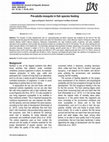
The inclusion of Culex stigmatosoma and Cx. quinquefasciatus pre-adults mosquito was analyzed as ... more The inclusion of Culex stigmatosoma and Cx. quinquefasciatus pre-adults mosquito was analyzed as live food for fish with ornamental potential (angel fish Pterophyllum scalare and zebra fish Brachidanio rerio), native (Mexican mojarra Cichlasoma istlanum) and endemic (Balsas catfish Ictalurus balsanus). Mosquito's characteristics are: high nutritional quality, movement, soft body, availability, abundance and acceptance, which position the pre-adults mosquito as a potential live food for fish species. The aim was analyzing the preadults mosquito efficacy in the feeding fish. The information analyzed show significant increases, depending on the species, in fish fed with pre-adults mosquito; increment in weight of 32.10 to 49.32 mg/day, specific growth rate of 1.96 to 3.25% body weight/day, spawning frequency every 14.40 to 28.0 days, eggs number from 506.45 to 1477.2 per spawn, offspring production from 212.71 to 1322.2, survival of larvae from 42.21% to 85.0%, and adults from 85.99% to 100%. However, and despite the good results, the cultivation of mosquitoes is not recommended, but recollection and inclusion as a live food in the diet for freshwater is recommended.
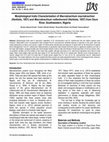
Morphological traits used in taxonomic separation of M. macrobrachion and M. vollenhovenii into t... more Morphological traits used in taxonomic separation of M. macrobrachion and M. vollenhovenii into two distinct species were reviewed. Observations from non-parametric traits revealed that M. macrobrachion exhibited absence of spinules on the palm; short and scanty pubescence on telson and uropod; a region of rostral spines discontinuity and presence of apical tooth on the dorsal part of rostrum which distinguished it from M. vollenhovenii. Measurements of parametric traits showed that there were no significant variations (p>0.05) in the mean total lengths, carapace lengths and rostral lengths between male to male and female to female specimens of the two prawns. Also, no significant variation (p>0.05) existed in their mean body weights, although specimens of M. vollenhovenii appeared more robust in body shape. Mean chela lengths (right and left) were higher for M. macrobrachion than for M. vollenhovenii. Meristic count of dorsal spines on rostrum ranged from 8-15 and 8-16 while that of ventral spines ranged from 3-7 and 3-8 for M. macrobrachion and M. vollenhovenii respectively. The results obtained in this study revealed that these prawns are easily separable based on their morphological traits. However, further study is recommended for their genetic characterization to validate their true existence as separate species.
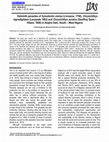
The study was carried out to determine the prevalence, intensity and pathological effects of para... more The study was carried out to determine the prevalence, intensity and pathological effects of parasites in Chrysichthys nigrodigitatus, Chrysichthys auratus and Synodontis clarias, from Asejire Dam, a man-made lake in south-west Nigeria. A total of 250 randomly selected fish specimens consisting of 63 C. nigrodigitatus, 99 C. auratus and 88 S. clarias were sampled from January to June 2011. Fish body length, weight and sex were determined. Dissection to extract helminth parasites and histopathological examination of tissues of the intestines and stomachs were carried out. A total of 1775 parasites were recovered from S. clarias and C. nigrodigitatus. Parasite prevalence was higher in S. clarias (86.36%) than in C. nigrodigitatus (7.94%) while C. auratus were not infected. Helminths recovered included five cestodes: Paraglaridacris limnodrili, Wenyonia longicauda, Wenyonia youdeoweii, Wenyonia virilis and Caryophyllaeus spp., and two nematodes: Procamallanus spp. and Cosmoxynema vianai. Infection in males and females was not statistically different (P>0.05). No significant difference was found in the prevalence of helminths in relation to size, however bigger sizes of S. clarias and C. nigrodigitatus were more parasitized. Pathological conditions such as lymphocytic infiltration, moderate disruption of muscular mucosa and intestinal villi, edema were found in infected fishes.
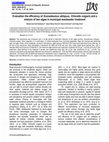
This experiment was conducted over a 15-day period to determine efficiency of two algae species, ... more This experiment was conducted over a 15-day period to determine efficiency of two algae species, Scenedesmus obliquus, Chlorella vulgaris, either singularly or in combination, in nutrient absorption from municipal wastewater. Algal cell counting was performed daily, but water nitrate, nitrite, phosphate, ammonia, chlorophyll a, algal biomass, BOD and COD levels were determined every other day. At the end of the experiment, water phosphate in treatments C0, M50 and S100 was zero. Also, water nitrate levels reached zero, only in treatment M50 and all groups of treatment S. The maximum algal biomass was observed in treatment S0 (0.6 gL -1 ; p<0.05) at the end of the experiment. Algal biomass of the treatment S groups was significantly lower than that of the other treatments (0.2 gL -1 ; p<0.05). The maximum chlorophyll a with significant difference was observed in treatment S0. COD and BOD content showed constant trends among the treatments. The lowest COD and BOD was observed in treatments S and C respectively (4.1 mgL -1 ; p<0.05; 1.3 mgL -1 ; p<0.05). Overall, Sc. Obliquus was more efficient than Ch. vulgaris in biomass production, chlorophyll a concentration and nutrient absorption.
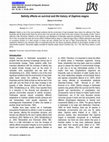
Salinity is one of the most significant problems that the environment of Iraqi freshwater faces w... more Salinity is one of the most significant problems that the environment of Iraqi freshwater faces where the suffering of the Tigris, Euphrates and the Shatt al-Arab Rivers as well as land in the past with only the finest of the clear increase in the quantity of salts. There is relatively a little information available on the responses and adaptations of freshwater organisms penetrating into brackish water. Bearing this in mind, we studied the acute and chronic effects of different salinity values in: Daphnia magna Straus, Salinity experiments were based on successive dilutions of a stock solution of coarse salt was collected from the land of Wasit Governorate-Iraq, The mortality was significantly affected by the interactive effect of suspended bentonite clay Salinity significantly affected all physiological variables on both experimental occasions. Total protein slightly increased for Daphnia magna reared in salinity 0.5‰, 1‰, 1.5‰, than those reared in control group.
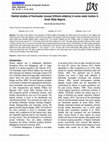
The report of the decline in the population of Etheria elliptica necessitate the habitat study of... more The report of the decline in the population of Etheria elliptica necessitate the habitat study of the mussel in river Ogbese and Owena reservoir, Ondo state, Nigeria in order to know the status of the organism within the ecosystem. Thirty (30) specimens each from the water bodies were sampled between May to August 2012. The meristic variables and the condition factor of mussels showed that the samples from Owena reservoir (K = 16.33) were heavier than River Ogbese (K = 8.34). The water quality parameter buttress a better mussel in Owena reservoir, this is as a result of controlled human activities experienced by the reservoir. Nevertheless, the water quality parameters obtained from both water bodies were within the requirements of the mussel. Positive allometric growth pattern was observed in Etheria elliptica from both water bodies (Ogbese b = 3.02; Owena b = 3.01). The flow rate of both water bodies differ slightly, with river Ogbese having the highest flow rate. The study revealed that Etheria elliptica in both study areas were in good and healthy conditions despite the various human activities on the water bodies.
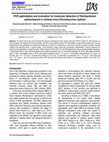
The goal of this study was to optimize the molecular polymerase chain reaction technique (PCR) to... more The goal of this study was to optimize the molecular polymerase chain reaction technique (PCR) to detect R. salmoninarum, as well to evaluate and determine the sensitive limits, specificity, and predictive values. The methodology comprised two phases: first, was the implementation and optimization of nested PCR technique to detect R. salmoninarum, and second, was the technique evaluation through sensitive and specificity tests. In second phase, it was needed to make cycling and temperature modifications of primers alignment to optimize and suppressed to unspecific bands. Tested primers were P3, M21, P4, and M38 against two species phylogenetically associated: A. salmonicida and M. luteus. Decimals dilutions were applied to sensitive test. The calculated specificity was 100%, with positive predictive value of 100%, and negative value of 100%. With respect sensibility, based in 12.1 ng µL -1 concentration, was detected (0.121 ng µL -1 ) in first step, and 1.21 × 10 -4 ng µL -1 at second step. While at a 26.1 ng µL -1 concentration, was detected 2.61 × 10 -3 ng µL -1 in first step, and 2.61 × 10 -10 ng µL -1 . We can conclude that nested PCR technique was selective and effective for estimated detection of 6.5 cells of R. salmoninarum.
Lee et al. (2018) Growth and response of Asian clam, Corbicula fluminea, towards treated… Int. J.... more Lee et al. (2018) Growth and response of Asian clam, Corbicula fluminea, towards treated… Int. J. Aqu. Sci; 9 (2): 120-121, 2018 121
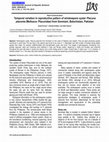
Windowpane oyster, Placuna placenta from Sonmiani on the coast of Pakistan was studied. They are ... more Windowpane oyster, Placuna placenta from Sonmiani on the coast of Pakistan was studied. They are pearl producing oysters well-known in south Asia. The sex-ratio in this species was found to be close to 1:1 Mendelian ratio with number of females being slightly greater than males. No sexually undifferentiated and hermaphrodite oyster was found. Five stages of gametogensis, developing, ripe, partially spawned, spent and resorbing were identified in male and female oysters. Spawning in males and females was observed throughout the year with peak in spring and autumn and a brief resting period in winter. Gonad index in males was 1 to 5, whereas, in females ranked 1 to 4. This value was never ranked 5 in females as continuous spawning occurred throughout the year except December. Parveen et al. (2018) Temporal variation in reproductive pattern of windowpane oyster Placuna placenta … Int. J. Aqu. Sci; 9 (2): 112-119, 2018 113
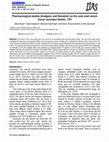
The venom of the cone snails has a rich source of novel peptides with pharmaceutical activity. Th... more The venom of the cone snails has a rich source of novel peptides with pharmaceutical activity. The aim of this study was to investigate the hemolytic, and analgesic effects of Conus coronatus venom. Samples were collected from Qeshm Island, Persian Gulf. The venom ducts were isolated and kept on ice then homogenized. The mixture was centrifuged and the supernatant was considered as a crude venom. The hemolytic activity was performed on human red blood cell and purification was carried out by using gel filtration chromatography on Sephadex G-25. The analgesic effect was evaluated via intraperitoneally (IP) injection in mice. Finally, the molecular weight of the analgesic fractions was determined by using Tricine-SDS-PAGE. Results showed that the crude venom exhibited no hemolytic activity on human erythrocytes and the purify fraction number C2 with dose 0/5 mg/kg showed the best analgesic activity in both acute and inflammatory pain and exhibited a dose-dependent analgesic effect (P<0.05) containing peptides with the molecular weight less than 6.5 kDa. The venom of the C. coronatus from the Persian Gulf contains an analgesic component for relieving acute and inflammatory pain with a small size and no toxicity which can lead to finding a new analgesic drug.
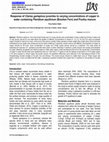
Pteridium aquilinum (four fully formed fronds and 3-4 young shoots) were acclimatized in tanks co... more Pteridium aquilinum (four fully formed fronds and 3-4 young shoots) were acclimatized in tanks containing 20 litres of water and 10 mg/l poultry manure for one week before the addition of different concentrations of copper (0, 1.8, 3.2, 5.6 and 10.0 mg/l) as hydrated copper chloride for twenty four hours. At the end of this period, juvenile Clarias gariepinus (mean weight 40g, length 22cm) which had been acclimatized for two weeks were introduced into the tanks containing P. aquilinum, poultry manure and different concentrations of copper as copper chloride for 96 hours. Each concentration of copper and 10mg/l poultry manure served as a treatment. This study aimed at evaluating the response of C. gariepinus juveniles when grown in water containing P. aquilinum, poultry manure and varying concentrations of copper. Alkalinity, phosphate and nitrate increased in water while copper content decreased at the end of the experiment. Concentrations of copper in water and fish flesh were significantly lower (p< 0.05) than in P. aquilinum with the highest concentration of 2776 mg/kg copper in the ferns exposed to 10mg/l copper and poultry manure. No significant differences were observed in the haematogical indices of fish. Histopathology showed changes in the gills, liver and kidneys. The muscle tissues showed no visible lesion even at 10mg/l copper and poultry manure. It was concluded that the water, C.gariepinus juveniles contained less copper than P. aquilinum in the presence of poultry litter.
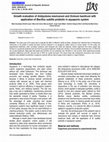
The mean goal of this study was to evaluate the effect of Bacillus subtilis probiotic, obtained f... more The mean goal of this study was to evaluate the effect of Bacillus subtilis probiotic, obtained from intestinal tract of Ambystoma mexicanum in the growth of axolotl and basil Ocimum basilicum in an aquaponic system during 10 culture weeks. For this study, two experimental treatments under controlled conditions were designed and made per triplicate. Axolotl organisms final mean weight was 22.85±0.31 g (probiotic treatment) and 22.91±0.55 g (control treatment); length was 126.62±1.34 mm (probiotic treatment) and 131.94±0.55 mm (control treatment). Basil plant total length was 202.85±1.52 mm (probiotic) and 199.28±0.71 mm (control). Both experiments showed significant differences (p<0.05). Survival was of 100% for axolotl and basil. This study shows that Ambystoma mexicanum and Ocimum basilicum were adapted successfully in aquaponic systems without need to apply some inorganic or organic fertilizer.

Four isoproteic (50% crude protein) and isolipidic (10% crude lipid) diets containing four differ... more Four isoproteic (50% crude protein) and isolipidic (10% crude lipid) diets containing four different carbohydrate sources (tapioca, corn, sago and dextrin) at the same inclusion level (20%) were fed to triplicate groups of fish for 67 days. The fish were cultured in 150L fiberglass tanks with 20 individuals/tank. At the end of the feeding trial, growth performance and feed intake of fish fed diets tapioca, corn and sago were better than those fed diet dextrin. Body indices, muscle and liver composition were also affected by the dietary treatments. Sago diet produced fish with significantly higher glucose and lower total protein than other diets. Meanwhile, only mean cell volume and platelet count of blood were affected by the carbohydrate sources. In general, the values of digestibility for dry matter, protein and lipid were considered high in all diets, with significant differences detected among them. In conclusion, all tested starches performed significantly better than dextrin as carbohydrate sources, and the findings of the present study had provided the aquafeed industry with more carbohydrate choices in the formulation of diets for grouper species. T. (2015) Effects of dietary lipid increments on growth performance, feed utilization, carcass composition and intraperitoneal fat of marble goby, Oxyleotris marmorata, juveniles. Turkish Journal of Fisheries and Aquatic Sciences, 15: 653-660. Zamora-Sillero J., Ramos L.R.V., Romano L.A, Monserrat J.M. and Tesser M.B. (2013) Effect of dietary dextrin levels on the growth performance, blood chemistry,body composition, hepatic triglicerides and glycogen of Lebranche mullet juveniles (Mugil liza Valenciennes 1836, Mugilidae). Journal of Applied Ichthyology, 29: 1342-1347.

The sea urchins belong to the phylum of Echinodermata, have been founded in the middle or the low... more The sea urchins belong to the phylum of Echinodermata, have been founded in the middle or the lowest depth of marine coral reefs. The sea urchins have been used in many different studies for more than one century. As there was no comprehensive study concerning characterization of the Persian Gulf sea urchin, E. mathaei, this study was aimed to investigate the cytology of its coelomocytes. Study of cytology was performed using light, scanning, and electron microscopy and flow cytometry as well. Coelomic cavity of sea urchin is filled with coelomic fluid that houses free mobile populations of cells of sea urchin E. mathaei, specifically called coelomocytes. They are distinguished to seven types based on their morphological and ultrastructural characteristics including red and colourless spherulocytes, granular spherulocytes, small spherulocytes, vibratile cells, and phagocytic cells. Phagocytic cells exist in two distinct forms; the petaloid and filopodial cell. Flow cytometry analyses showed three cell populations. To our knowledge, this is the first report describing ultrastructural details of the coelomocytes of E. mathaei.
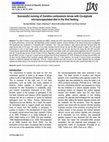
The effect of dietary microencapsulated diet (MED), artificial diet (ATD; approximately 28% prote... more The effect of dietary microencapsulated diet (MED), artificial diet (ATD; approximately 28% protein) and Artemia shell-free (ART) on growth performance, survival rate, diet digestibility, protein synthesis capacity, enzyme activities of the larvae shrimp were investigated. . The experiment was conducted in 3 treatments with 5 replicates. . The 1 day post hatched (1 dph) shrimp were then fed twice daily with experimental diets for 60 days. . The results of this study indicated that the larvae fed with the MED showed a higher (P<0. . 05) growth performance in term of total weight, specific growth rate, average daily gain and survival rate than the larvae fed with ART and ATD. . Concerning the experimental diet digestibility, MED was reported to have higher protein and carbohydrate digestibility than ART and ATD in both the 15 and 60 days larvae (15 and 16 dph) (P<0. .05). . Regarding, protein synthesis capacity, muscle RNA concentration in the shrimps fed with MED (16. .33±1. .15 µg mg-1 muscle) was much higher than the other treatments (P< 0. .05). . Similarly, the shrimps fed with MED over 60 days had the highest protein synthesis capacity (RNA/ / protein ratio) (P< 0. . 05). . However, the results of muscle protein concentration showed no difference between the treatments. . (P>0. .05). . Enzyme activities were also focused on, the results indicated that the protease, amylase and lipase activity of the larvae fed with the microencapsulated diet was much higher than the other experimental diets (P< 0. .05). .
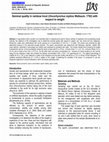
In aquaculture farms, growth is an essential factor in assessing the yield of inputs, welfare of ... more In aquaculture farms, growth is an essential factor in assessing the yield of inputs, welfare of organisms and accelerating sexual maturity; the objective of the investigation was to determine seminal quality with respect to weight: one, two, three and four kilograms. Ninety-four males were anesthetized with clover essence at a concentration of 0.05 mL L -1 of water. The semen was extracted by light abdominal pressure in the operculum-caudal direction. The sperm concentration was determined with Neubauer chamber, viability with eosin-nigrosin, estimated in percentage and motility was evaluated by activating with water. The results indicate that increasing the weight increases the volume. In the one kilogram males the mean volume was 8.0 ± 3.9 mL, in those of two 11.1 ± 6.1 mL, in those of three 12.3 ± 8.3 mL and in those of four 29.2 ± 21.8 mL. On the other hand, the sperm concentration mL -1 showed an inverse tendency to the volume being the two kilograms males who showed the highest concentration 6.80 ± 0.55 x 10 9 spermatozoa mL -1 ; the highest percentage of viability 94.19 ± 1.42 % was obtained in males of two kilograms and the best motility with 86.00 ± 4.14 s in those of three kilograms. The variables presented differences (P ˂ 0.05) in relation to the weight. Considering the variables of the study, it is proposed to use two kilograms organisms to ensure fertilization, which will reduce operating costs.
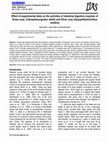
A ninety days feeding experiment was directed to compare the effect of Duckweed (Lemna minor) and... more A ninety days feeding experiment was directed to compare the effect of Duckweed (Lemna minor) and soybean, Glycine max (L) meals as a source of protein on the actions of intestinal digestive enzymes of Chinese carps; Grass carp, Ctenopharyngodon idella (Valenciennes, 1844) and Silver carp, Hypophthylmichthys molitrix (Valenciennes, 1844) fingerlings reared in monoculture and polyculture system. Two 35 % protein experimental diets, FSBM (feed containing 21 % soybean meal) and FDW (feed having 21 % duckweed) as a source of protein were prepared and fed for twelve weeks. At the end of trial, the experimental diets showed a significant effect on the activities of intestinal digestive enzymes. There is significant (P<0.001) difference in the intestinal cellulase, protease and amylase enzymes in both Chinese carps. In culture systems, intestinal protease and amylase activities of fingerlings of C. idella fed FDW diets were significantly higher as compared to fish fed FSBM diet. In polyculture system, the intestinal amylase activity of H. molitrix fingerlings was significantly higher when fish offered FDW diet as compared to FSBM diet. The results of this study indicate the usage of L. minor as a protein source in polyculture system enhances the fish digestive capacity than monoculture system.

Algae are the main components of primary production in sea and refinery wastewater. Microalgae an... more Algae are the main components of primary production in sea and refinery wastewater. Microalgae and cyanobacteria are the most-used groups. In the present study, refined wastewater was collected from drainage of a refinery in Gorgan to evaluate efficiency of two algae mixture, Scenedesmus obliquus and Chlorella vulgaris, to remove water nitrate, phosphate, BOD and COD during 14 days. An equal number of either of the algae (24000 cells) was added to each treatment at the experiment initiation. The algae number were daily counted; whereas, the media nitrate, phosphate, ammonia, chlorophyll-a, biomass, BOD and COD were measured every other day. At the end of study, phosphate was completely depleted in M50 treatment and the highest phosphate level (1 mg/l) was observed in M0 treatment (p <0.05). Water nitrate was completely depleted in M50 treatment. The highest biomass levels (0.4 g/l) were observed in M0 and M50 treatments (p <0.05). The highest chlorophyll-a was observed in M0 treatment (2.83 mg/l). BOD and COD had similar pattern among the treatments. The lowest COD was related to M50 treatment (5 mg/l); whereas the lowest BOD level was observed in M0 treatment (0.05 mg/l). Overall, the algae mixture was efficient to uptake nutrients and produce biomass and chlorophyll.

The knowledge of the reproductive physiology of fish of commercial interest is fundamental to opt... more The knowledge of the reproductive physiology of fish of commercial interest is fundamental to optimize reproduction in wildlife or in captivity, so this research aims to determine and compare the seminal quality of Chirostoma jordani and Chirostoma humboldtianum. A sample of 20 specimens of each species from the state of Tlaxcala and Mexico City were obtained, respectively, from which the semen was obtained by slightly pressing the abdominal region in the operculum-caudal direction, collected with a micropipette of 100 μL and placed in microcentrifuge tubes. According to the results, the mean volume of semen was 2.73 ± 1.0 μL for C. jordani and 2.47 ± 1.8 μL in C. humboldtianum, while the mean sperm concentration was 9.24 ± 4.32 x 10 6 spermatozoa mL -1 and 15.58 ± 13.81 x 10 6 spermatozoa μL -1 respectively, with 95.10 ± 4.90 % and 92.10 ± 1.89 % of live cells respectively, and average motility of 437.85 ± 90.37 s and 549.40 ± 31.80 s respectively. Finding significant differences in the motility time between both species. Information that contributes to the knowledge of the reproductive biology of C. jordani and C. humboldtianum to improve their reproduction in captivity or wildlife.





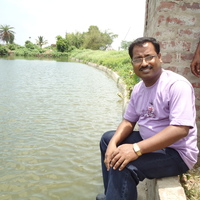

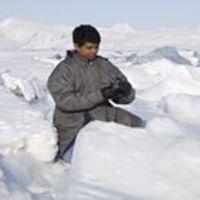
Uploads
Papers by International Journal of Aquatic Science